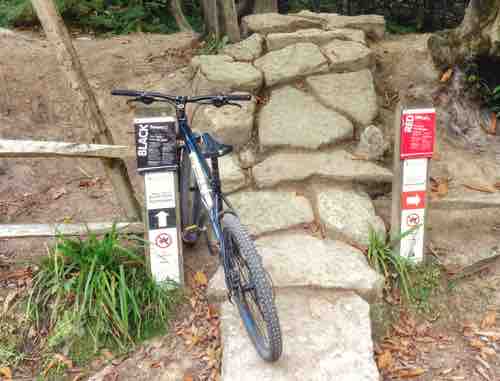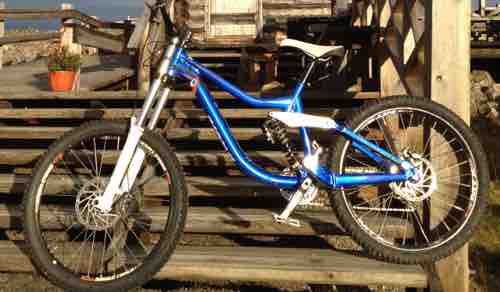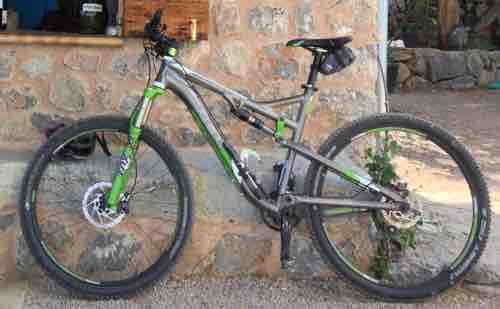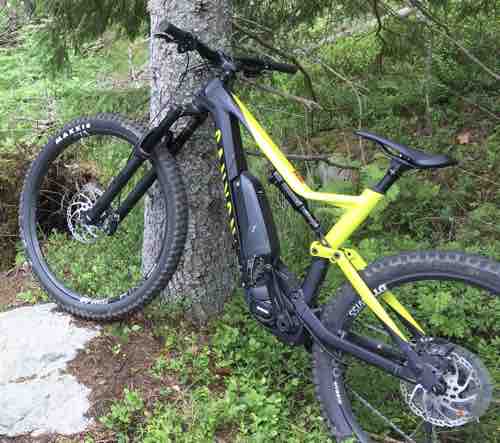If you want to know the basics of mountain biking – welcome! If you’ll want to ride on trails and explore nature, learning the basics will help you enjoy it more.
Mountain biking is a fun way to practice while connecting with nature, as you can ride on all kinds of terrains with mountain bikes.
If you’re a biking enthusiast, but ride only on the road, give mountain biking a try.

Are you a beginner?
If you are an absolute beginner wanting to ride a mountain bike, you probably have no idea where to start.
It can be hard to choose the right bike if you are looking for your first mountain bike, or if you are renting out.
So, if possible, rent a mountain bike first. You can test different bikes and decide on which one, traditional, e-mtb, and so on, suits you best. Make sure that the people renting you the bikes have taken proper care of the bikes.
When you rent a bike from a trail center, you can get help on bike setup and information on suitable trails for your skill level.
We highlight here some essential things to keep in mind when selecting your first mountain bike.
Trails
You need not be in the mountains to enjoy mountain biking. There are trails and trail centers all over the UK, and the trails vary from pleasant rides on wide, flowing logging roads to high-adrenaline challenges on technical singletrack.
Sure we can all ride a bike, but when the trail turns into a rock garden, then we need to know something about mountain biking.

Mountain biking requires some different skills than road cycling, like balancing yourself, and proper use of pedaling.
Bikes
Mountain bikes are among the most durable bikes you can find. Bikes need to be strong as we might ride on some very tough terrain, including dirt tracks, steep inclines, and pebbles.
Usually, mountain bikers do not ride on paved roads. Instead, they ride on uneven and hilly terrain that can be rough on the gear and demanding for your physics.
Mountain bikers get thrilled in riding on rugged terrain, even though this is hard on a bike. That’s why we have sturdier bikes.
The tires on a mountain bike are fatter and thicker than regular bike tires. You also need added traction and control on uneven surfaces, so they make tires of more durable rubber.
The suspension is another very essential feature of a mountain bike. A robust suspension system is vital so you can better handle the uphills, downhills, rocks, and drops that happen when riding on the bumpy territory.
We can separate mountain bikes into several categories by the suspension type.
The classifications are:
- full suspension: shocks at the rear and front
- hardtail: only a front suspension fork
- rigid: no shocks, a rigid fork at the rear and front
Then you can classify them according to the usage:
- cross country
- all-mountain
- enduro
- downhill
- fat bike
- e-
mountainbike
Cross country bikes have traditionally been rigid or hardtail. Nowadays, when suspension systems are more advanced, there are also full-suspension models.
All-mountain and enduro are full suspension bikes, as well as downhill, which is the heaviest and sturdiest of them all.
A fat bike is for off-road use with oversized tires, 4-5 inches in width. You can use lower tire pressures to ride on snow, sand, bogs, and mud. Far bikes are usually rigid or hardtail.
Lightweight materials are the norm for a cross-country bike. All-mountain or Enduro bike is heavier than a cross-country bike.
For downhill riding on trail centers, you need a downhill mountain bike.

For beginners, all-mountain and enduro bikes are more versatile.

E-

Other than mountain bikes, you will find trial bikes, street mountain, dirt jumping, and other sub-categories for a particular use.
For a typical mountain biker, the bike to choose is all-mountain, which has the broadest range of terrains to ride on.
Wheel size
Most mountain bikes nowadays have 29-inch wheels; some have 27.5-inch wheel size. Initially, the 26-inch wheel was the norm.
You can go perfectly well with either 29-inch or 27,5-inch wheels. It’s a matter of personal preference.
Tire width
Typical tire width is 2.1 inches. A wider tire provides better stability when cornering.
However, wider tires have higher friction that affects speed. So we have to make a compromise: cross country bikers tend to use tires with a width of 1.8-2.2 inches, All-Mountain riders and downhill racers use tires up to 2.1 and 2.4 inches wide.
On 27.5-inch wheels, we have seen lots of plus-sized tires, where tire width is 2.5-inches and more up to over 3-inches.
The bigger the tire and the wider they are, the friendlier they will be to beginners.
Practice gets you in shape
If you’re not in shape – you can get in shape with mountain biking. Riding on rough terrain with mountain bike will really get your heart pumping. Climbs will challenge your cardiovascular strength, and over time your heart will become stronger.
Don’t get on a bike and then stumble on the hardest trail and through yourself on it. Start with beginning trails and work on your skills and fitness for a while.
Staying safe
Riders fall. Face it – it will happen. So the most crucial thing you need to use is a good helmet. Never buy a used helmet – you don’t know what’s happened to it. Also, goggles or other eye protection is a must.

Then you need proper shoes. Buy appropriate mountain biking shoes; don’t use your sneakers.
When riding on tougher terrain, some bikers use elbow and knee pads.
Always carry a few dollars and some change in a pocket so you can call for help if needed and make sure you have identification on you at all times. That last bit of advice is good for any biking, or hiking, or running, come to that! Always be prepared for the worst to happen, and then it, hopefully, never will.

